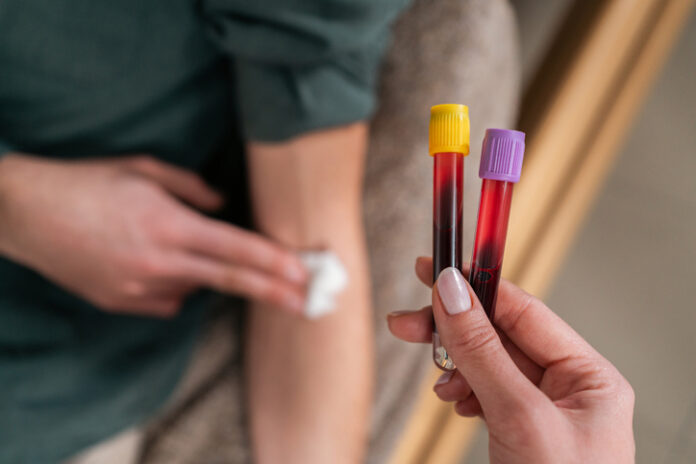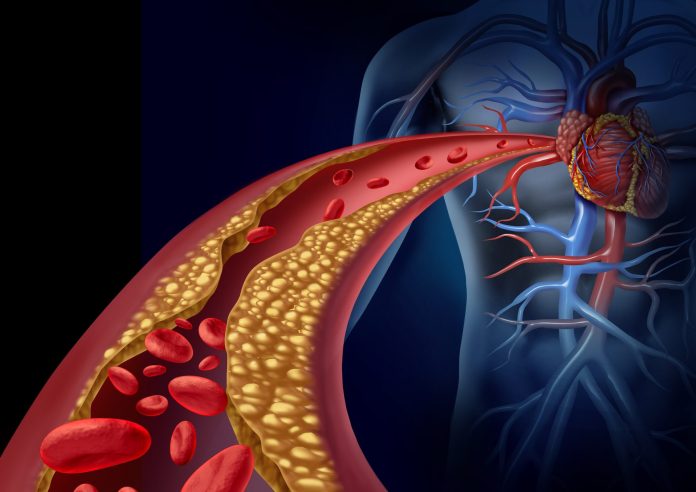
A blood test that measures the number of circulating tumor cells (CTCs) at the time of metastatic prostate cancer diagnosis can predict treatment response, disease progression, and overall survival, regardless of subsequent therapies over time, shows a study led by University of Southern California (USC) researchers.
The test could be used to identify men with newly diagnosed metastatic hormone-sensitive prostate cancer (mHSPC) who are likely to experience worse outcomes and could therefore benefit from inclusion in clinical trials evaluating more aggressive therapeutic strategies, report Amir Goldkorn, MD, lead author of the study and associate director of translational sciences at the USC Norris Comprehensive Cancer Center at the Keck School of Medicine of USC, and colleagues.
Goldkorn and co-authors explain in JAMA Network Open that although CTCs have been studied in prostate cancer before, they have typically been used in trials among men with later-stage metastatic castration-resistant prostate cancer (mCRPC).
“To date, few candidate biomarkers assessed in mCRPC have been formally evaluated in mHSPC,” they write. “Yet, management of this earlier disease state arguably has more to gain from informative biomarkers as a large majority of men diagnosed with mHSPC experience excellent performance status and a life expectancy measured in years. Men predicted to have a poor prognosis could be selected for more intensive or investigational treatments, whereas those with good prognosis, especially if frail or older, could be treated less aggressively.”
To address this, Goldkorn and colleagues evaluated CTC counts among 503 men with mHSPC who were taking part in a phase III clinical trial. The CTCs were measured using the previously validated and FDA–cleared CellSearch platform at the Norris Comprehensive Cancer Center’s Liquid Biopsy Research Core, a facility that Goldkorn founded and directs. CellSearch uses immunomagnetic beads, antibodies attached to small magnetic particles, which bind to CTCs in the blood and pull them out to be detected and counted by specialized equipment.
They found that, at baseline 11.9% of men had 5 or more CTCs per 7.5 mL of blood, 21.3% had 1 to 4 CTCs per 7.5 mL, and 66.8% had no detectable CTCs.
The researchers report that median overall survival for men with 5 or more CTCs per 7.5 mL was 27.9 months compared with 56.2 months for men with 1 to 4 CTCs per 7.5 mL. At a median 78.0 months of follow-up, median OS had not been reached among the men with no detectable CTCs at baseline.
Median progression-free survival was 11.3 months, 20.7 months, and 59.9 months among men with 5 or more, 1 to 4, and 0 CTCs per 7.5 mL, respectively.
After taking potential confounding baseline characteristics into account, the team found that men with 5 or more CTCs per 7.5 mL had a significant 3.2-fold higher risk for death and a significant 2.5-fold higher risk for disease progression than men with 0 CTCs per 7.5 mL at baseline.
“Most men are on first-line hormonal therapy for years, then treated with a variety of other drugs (e.g. chemotherapy), so we were surprised that CTC count right at the start of their treatment was still so predictive of their overall survival, regardless of all the subsequent therapies over time,” Goldkorn told Inside Precision Medicine.
Having 5 or more CTCs per 7.5 mL at baseline was also associated with a significant 74% lower odds of having a prostate-specific antigen complete response compared with having no CTCs at baseline.
The researchers also observed a consistent trend throughout the disease course among a small subset of 61 patients who had matching CTC counts at baseline and when they progressed to mCRPC. In this subgroup, high or low CTC count at presentation with mHSPC was highly correlated with high or low CTC count at progression, whereas other prognostic clinical variables that were associated with CTC counts at baseline showed no association at progression.
“This finding suggests that despite the well-documented phenomenon of treatment-emergent molecular alterations and resistant clones, underlying aggressive disease phenotypes associated with high CTC count are present both before and after exposure to treatment selection pressures,” Goldkorn and the researchers remarked.
They concluded that their findings “validate CTC count as a prognostic biomarker” for mHSPC.
Goldkorn and his team are now testing a new blood test that measures not just CTC counts, but also the molecular composition of CTCs and tumor DNA circulating in the blood, as well as other factors. Their goal is to create biomarkers with even more predictive power, which may ultimately help match patients with specific treatment options.









![Best Weight Loss Supplements [2022-23] New Reports!](https://technologytangle.com/wp-content/uploads/2022/12/p1-1170962-1670840878.png)




